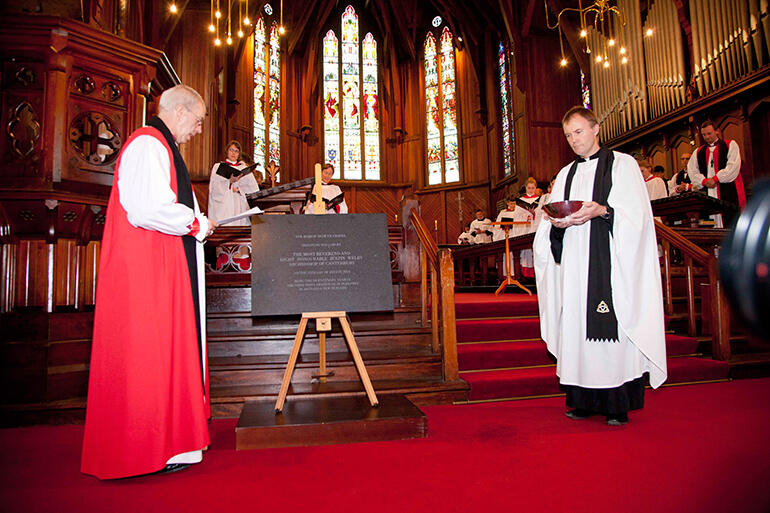
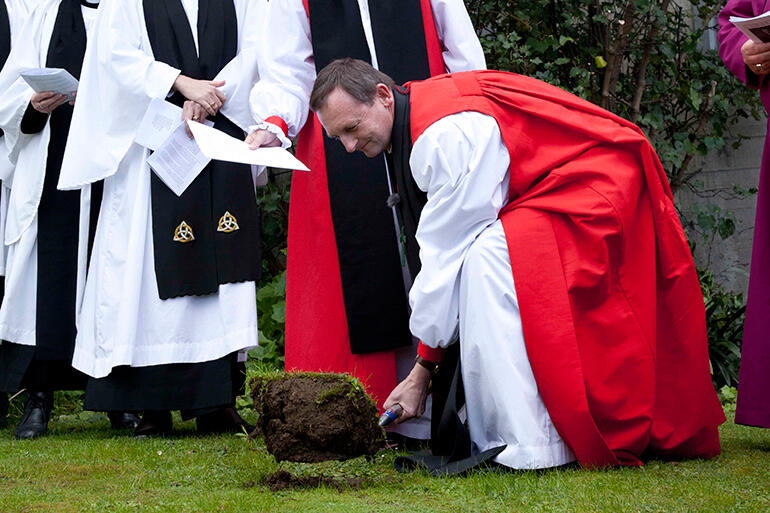
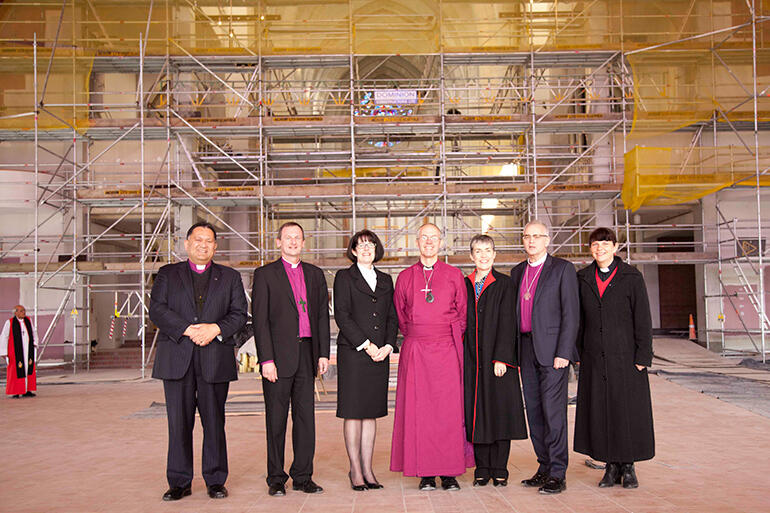
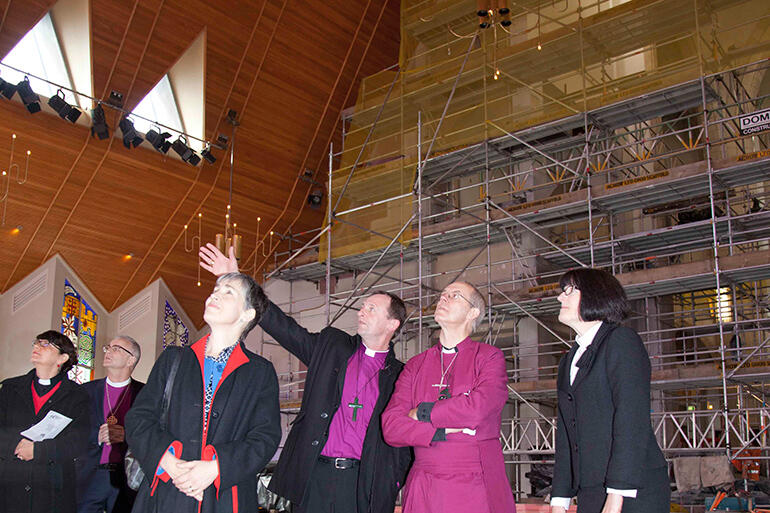
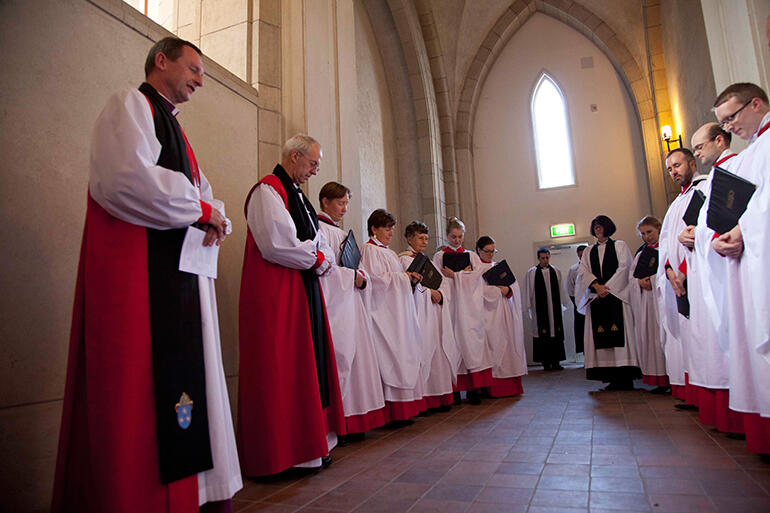
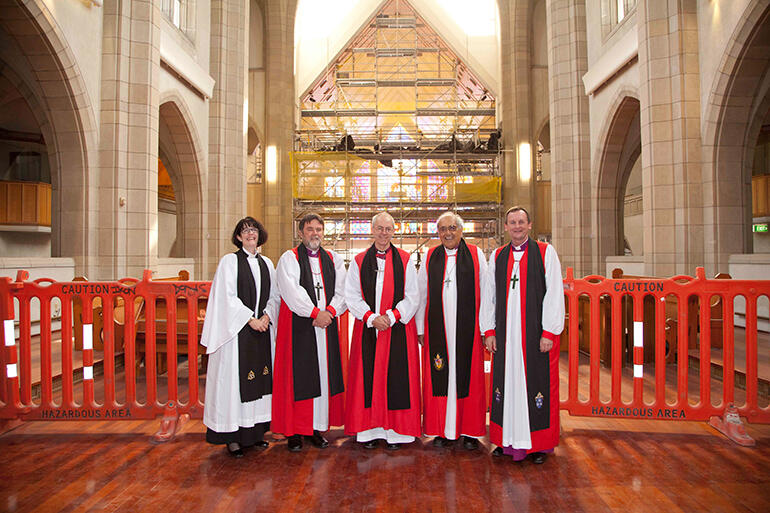
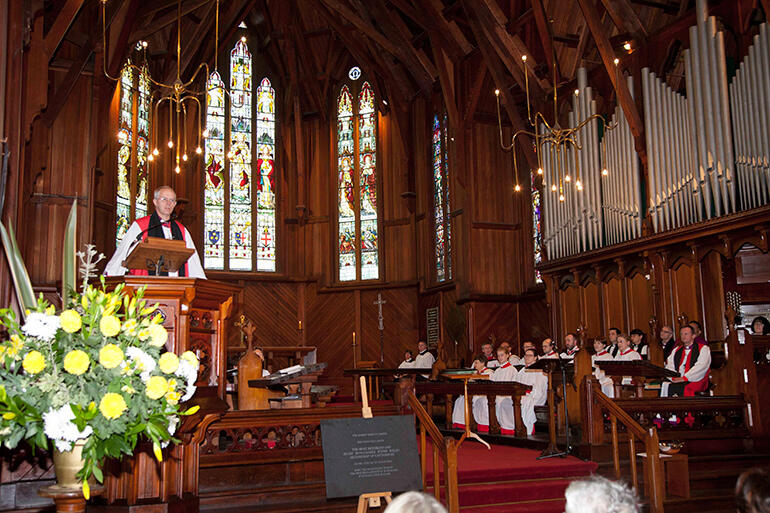
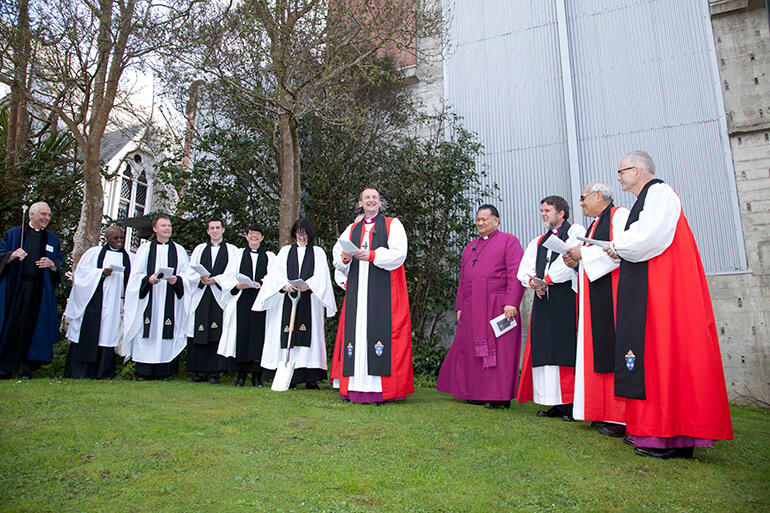
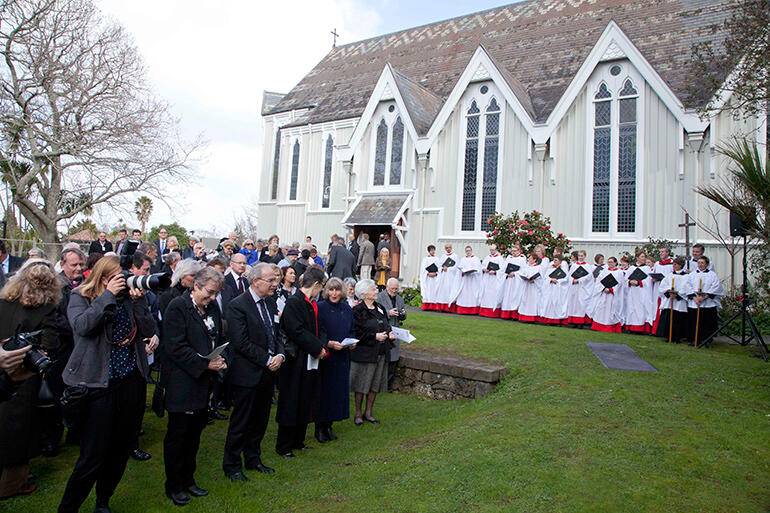
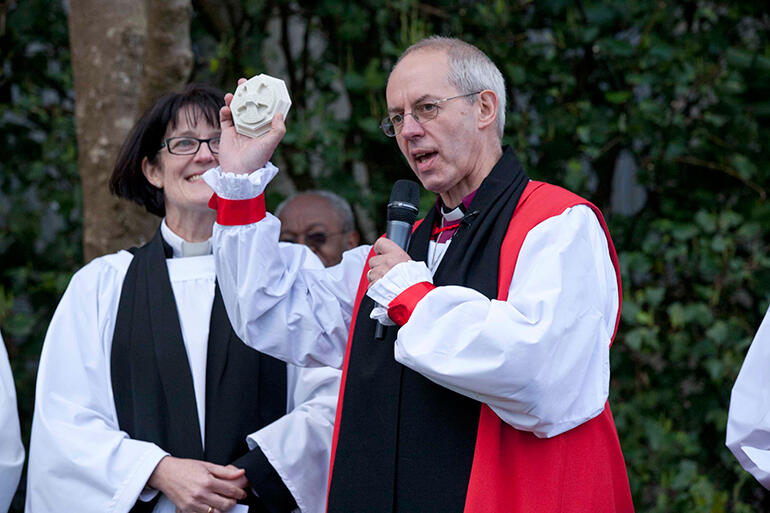
The Archbishop of Canterbury, the Most Rev Justin Welby, this morning dedicated the foundation stone for the new Bishop Selwyn Chapel, which will complete Auckland’s Holy Trinity Cathedral.
He did so in a brief service in St Mary’s-in-Holy-Trinity – for the duration of the service, the engraved stone stood on an easel, on the steps of the sanctuary – and he spoke with a convert’s passion of what cathedrals can be.
Before being ordained a bishop, he had already served for nine years in two modern Cathedrals: in Coventry Cathedral, from 2002 to 2007, and in Liverpool, where he was dean from 2007 to 2011.
“I came to cathedrals with a great deal of scepticism – and left with a great deal of enthusiasm.”
He described them as “safe places to do risky things in Christ’s service.”
“Cathedrals”, he went on, “are the vanguard of the church in its mission and ministry in any community.”
They had been so through the Dark Ages, in the early medieval period in Europe – and they can still be so today. He invited his Auckland congregation “to be overwhelmed with the possibilities of what you could have here.’
“There is no limit to what can be done in a great cathedral.”
Before the service had started, Archbishop Welby had been escorted through the new cathedral – which is closed while the original organ is removed. He had stood in front of scaffolding which soars perhaps 40 metres to the apex of the roof.
“And as I walked in through the liturgical west end of your new cathedral – there was exactly the right reaction: I looked up.
“That wonderful nave draws the eye upwards. It draws the eye outwards. It unites with what was there already.
“It has promise. It has challenge. It defies you to use it to its limits.
“And they will be very broad limits indeed. The walls of a cathedral are not the limits of its ministry.
“They call on you to extend your tents, to make more space – to be bigger than you can imagine that you were called to be.
“Because God is at the centre of it. And there is no limit to what can be done.”
After he’d dedicated the foundation stone, and prayers were said – Dean Jo Kelly-Moore prayed the prayer Dean George Rae Monteith had used in 1957, at the laying of the foundation stone for Holy Trinity cathedral itself – the congregation and ministry team filed outside for the ground breaking ceremony.
As they did so, clouds skudded over the tops of the bare oak trees that mark the edge of where the new chapel will be built.
Cassocks flapped in the stiff, cool breeze, and a wayward order of service whipped across the site.
But none of that dimmed Auckland Bishop Ross Bay’s enthusiasm as he prepared to turn the first sod.
“This is a really exciting moment for me,” he said.
Nor did the chill wind extinguish his humour: “I would like to be reported as the sod-turner,” he quipped. “And not as the sod who turned…”
Bishop Ross swung his spade beneath the Parnell end of the cathedral – which for some years has presented a rather unlovely, sawn-off sight, with its rough shuttered concrete, and its corrugated iron cladding.
The Selwyn oaks at the other end of the site were bare, too – but the branches of the small native trees immediately above where Bishop Ross had wielded his spade?
No doubt about it.
They are already showing growth. A new season is coming, they seemed to say.

















Comments
Log in or create a user account to comment.